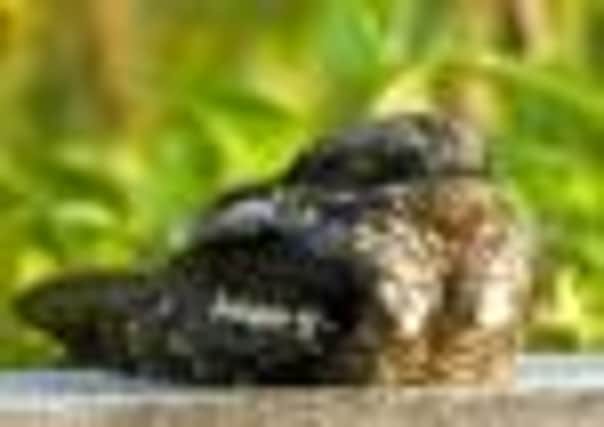Birdwatch: Three churrs for the return of the nightjar


Its courtship display is in full swing with the male clapping his wings and making sharp calls which carry for a long way through the still evening air.
Then, as dusk falls, he will settle down to sing for the night, perched on a bush or lengthways along a branch, his churring song rising and falling for up to five minutes at a time.
Advertisement
Hide AdAdvertisement
Hide AdThere are a number of places in Yorkshire to go look for nightjars, one of the best being clearings in Cropton and Wykeham forests on the North York Moors, while they also breed on Thorne and Hatfield moors in South Yorkshire.
But, as with many birds, one can turn up in an unexpected place.
An early visitor to the Tesco store at Stairfoot, Barnsley, last month heard a nightjar churring from a patch of waste land nearby, and the bird remained in the area for five days, singing while perched on a wooden pallet and sometimes flying to perch on street lamps or land briefly on the road.
As Ron Marshall’s picture of this bird shows, the nightjar is, indeed, a curious-looking bird with its bark-like plumage resembling a giant moth.
Advertisement
Hide AdAdvertisement
Hide AdIts huge dark eyes and flattish head give it an almost reptilian appearance while the tiny bill, surrounded by bristles will open to a gape at least as big as the circle formed by a first finger and thumb and with which it can scoop up huge numbers of insects as it flies.
Nightjars, along with woodlarks, with which it shares similar habitats, have had mixed fortunes. Numbers of both plummeted after heathlands, their traditional home, were ploughed up, built on or were planted with conifers.
But the surviving heathlands are now well protected while the conifer forests have provided an ideal alternative home for nightjars.
Trees planted between the wars have been felled and the newly-planted areas provide good nesting sites for nightjars.
Advertisement
Hide AdAdvertisement
Hide AdAs a result, numbers have quadrupled over the past 40 years and are still rising, and woodlarks are also thriving.
Both are expanding into new areas as woodland and heath management, such as the work being carried out by Natural England on heathlands surrounding York, make more suitable areas available.
Last spring, there was a singing nightjar on Skipwith Common, while a juvenile was seen on passage there in autumn, a breeding pair on Allerthorpe Common and two pairs on Strensall Common.
Birds seen in the region over the weekend included a honey buzzard at Wykeham Forest, in North Yorkshire, on Sunday, as well as a golden oriole at Kildwick Moor.
Advertisement
Hide AdAdvertisement
Hide AdAlso spotted were a red-necked grebe, at Hatfield Moor, South Yorkshire, on Saturday, and a quail at Edge Mount.
An icterine warbler was seen at Spurn, in East Yorkshire, on Monday, and a little stint at Beacon Ponds, on Saturday.
A new publication, North Cave Wetlands, The First Ten Years, is now available at a cost of £5 from the reserve’s Wild Bird Cafe, which is open from 7am to 3pm daily, or from Mike Ashforth on 01430 423803 for the same price, plus post and package.
The book outlines the transformation of this site from a working sand and gravel quarry into a highly successful Yorkshire Wildlife Trust reserve, and the wildlife that can now be found there.